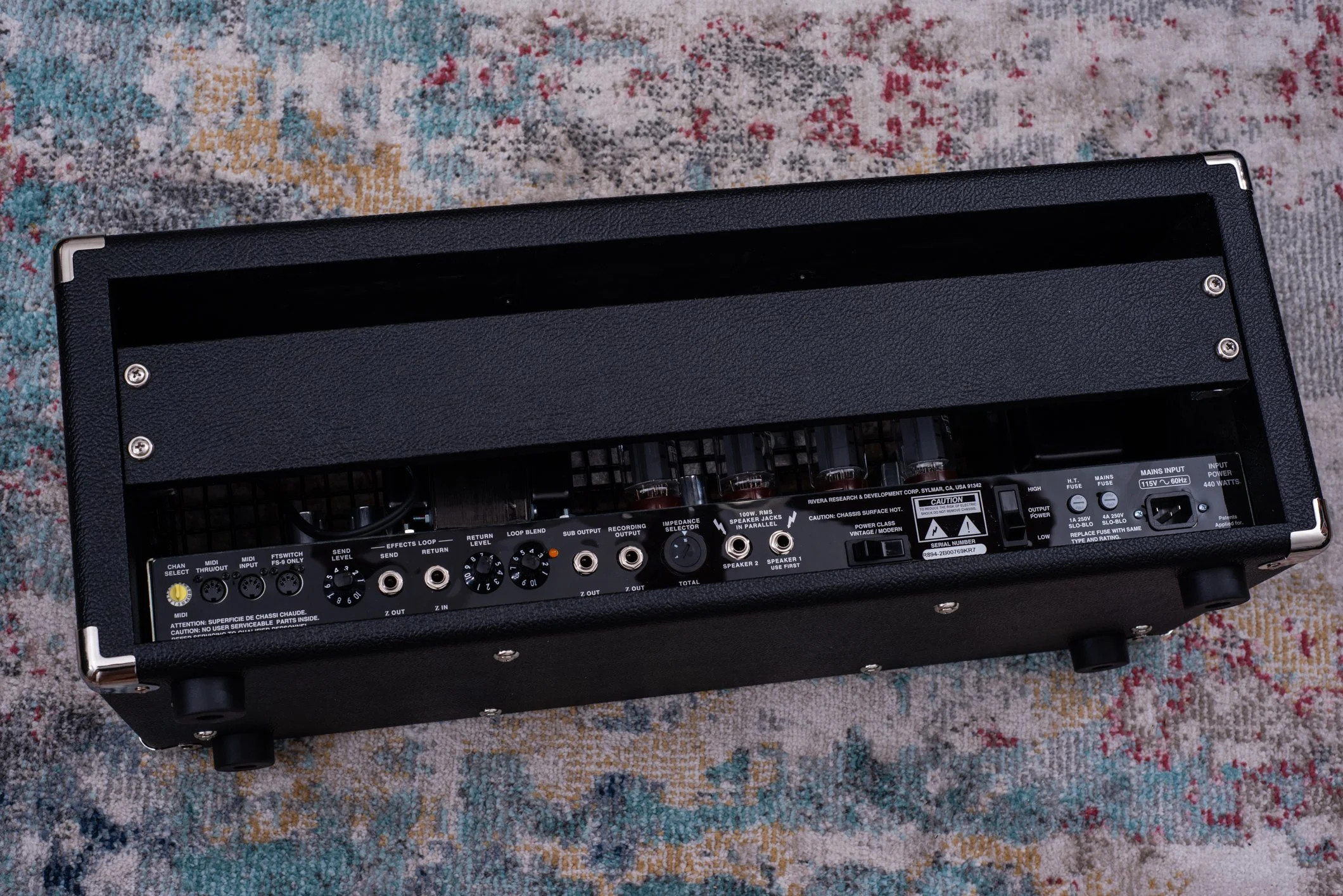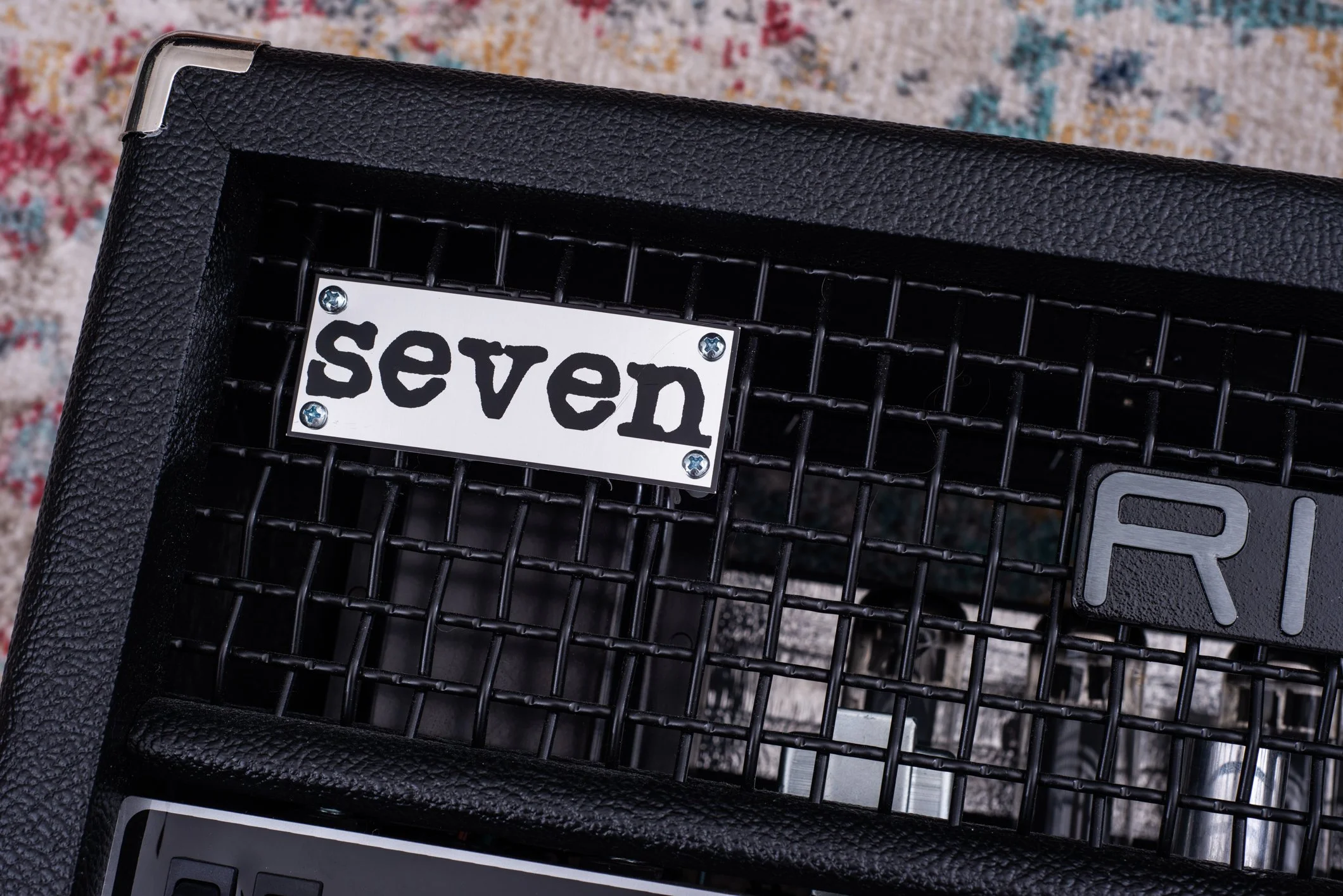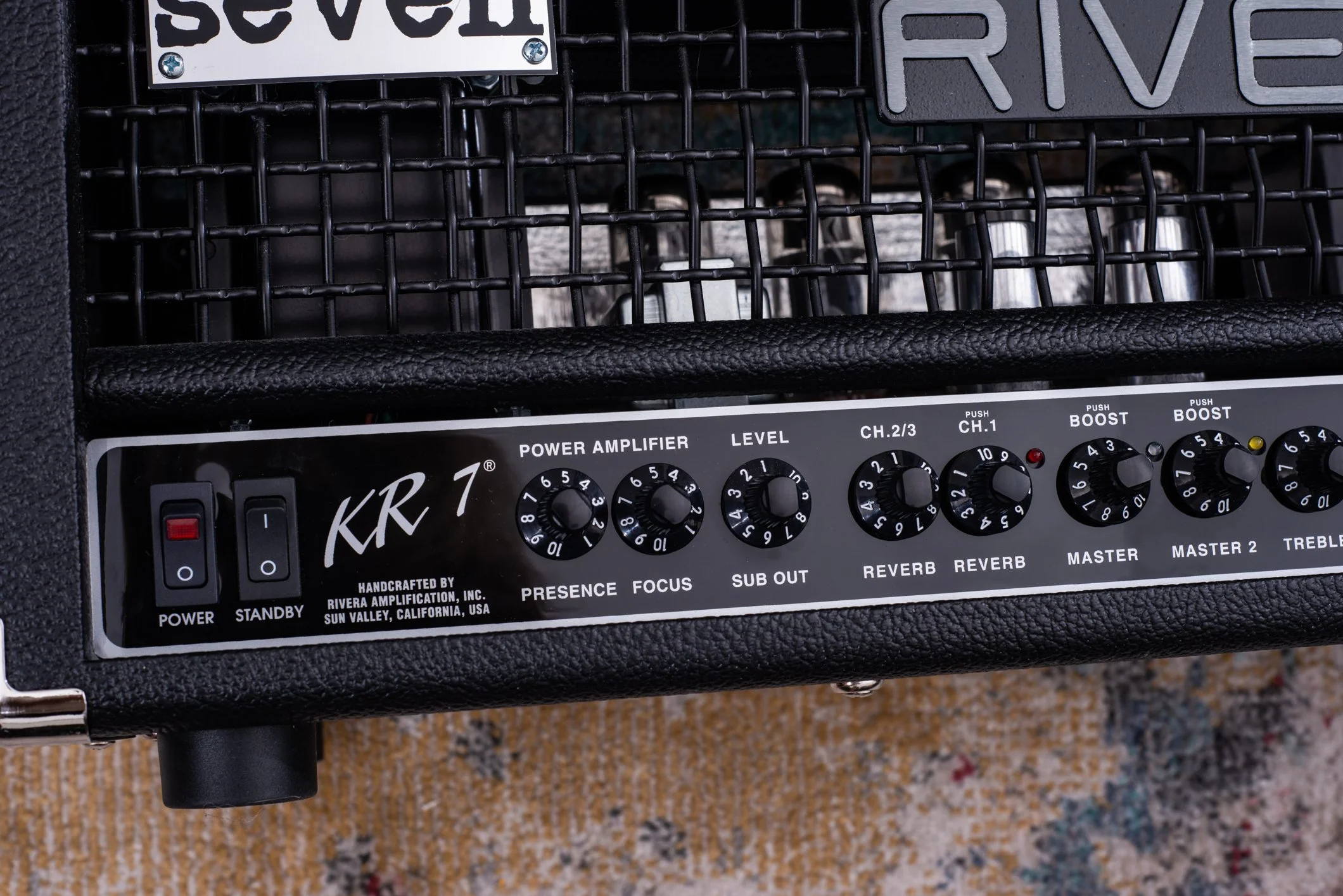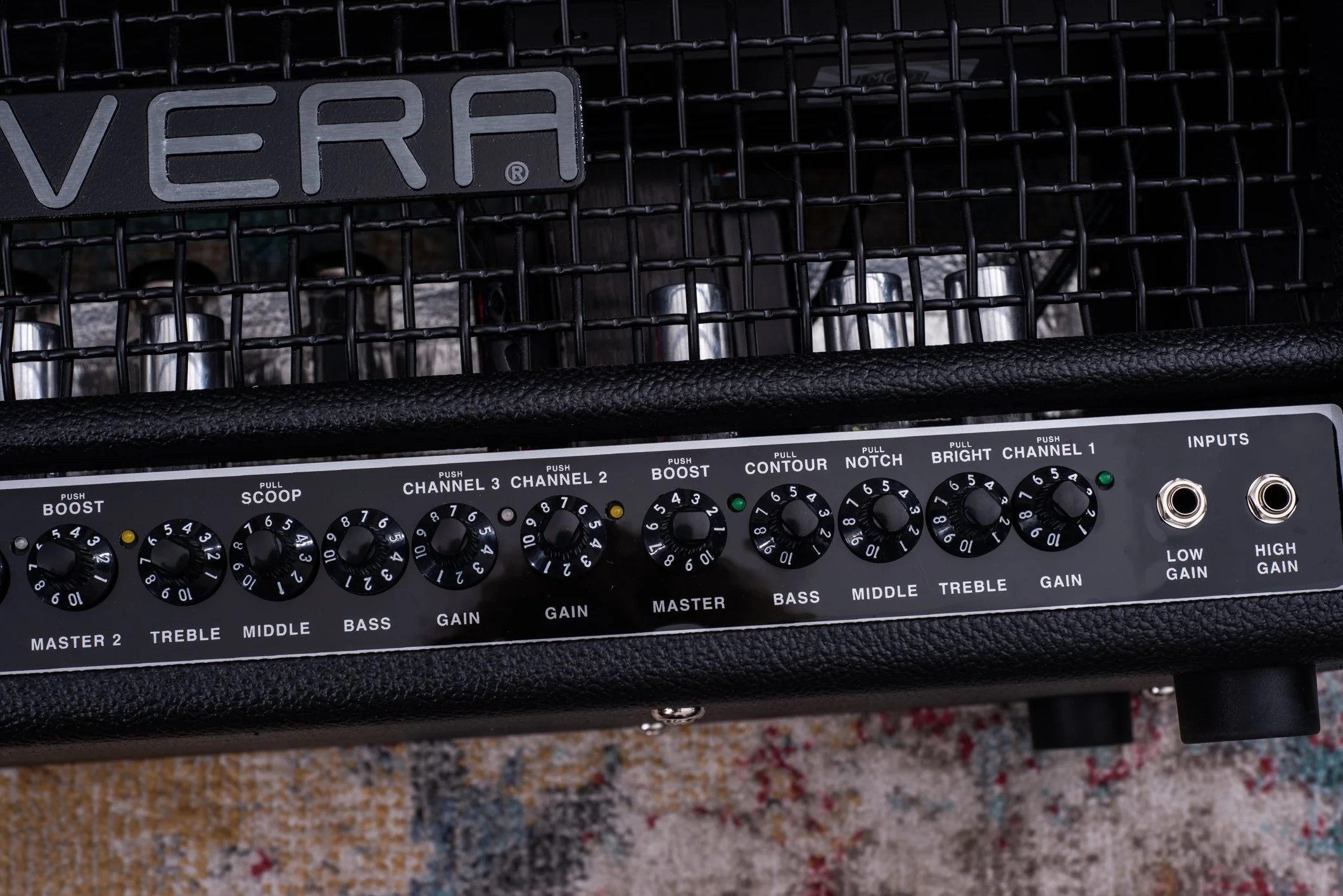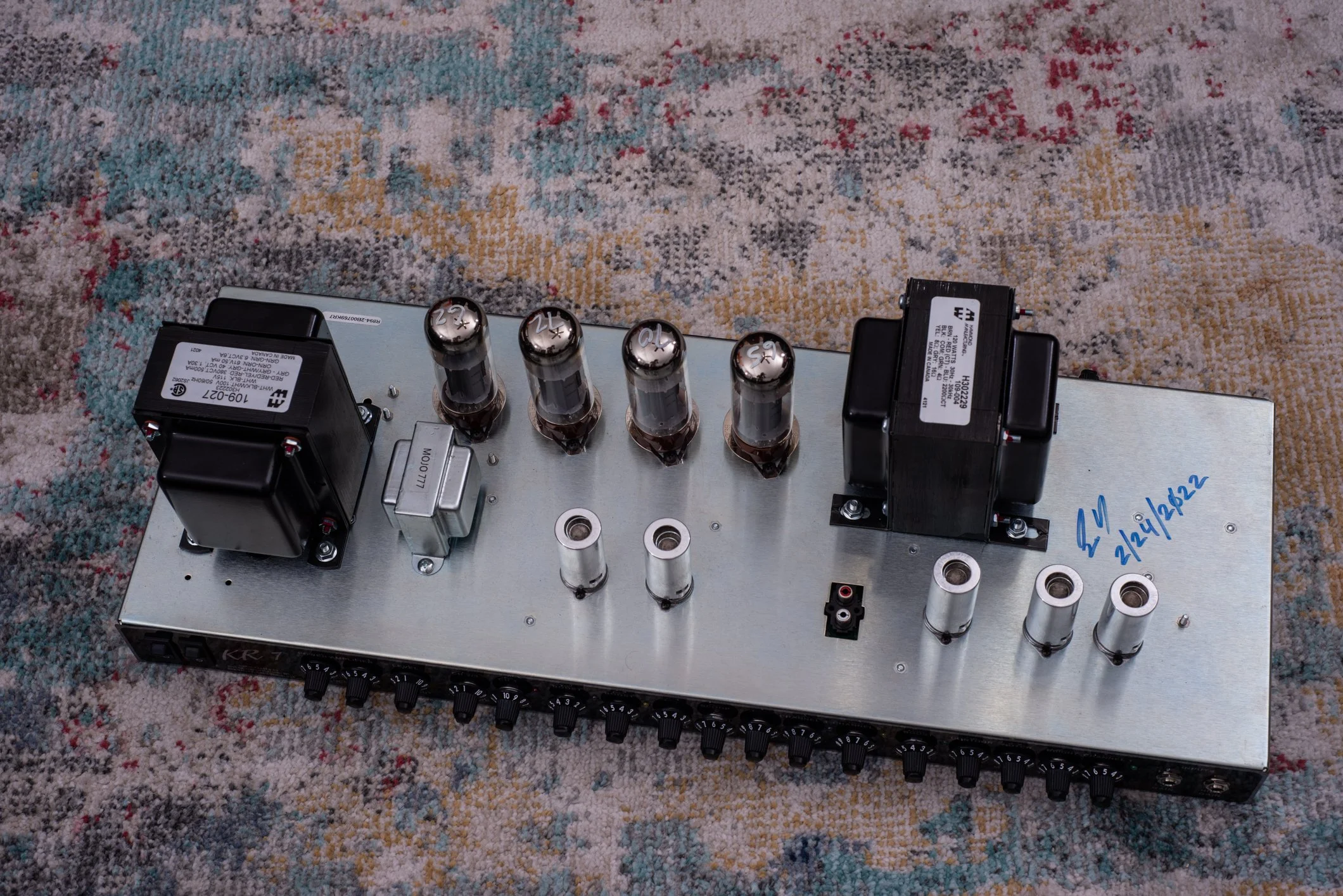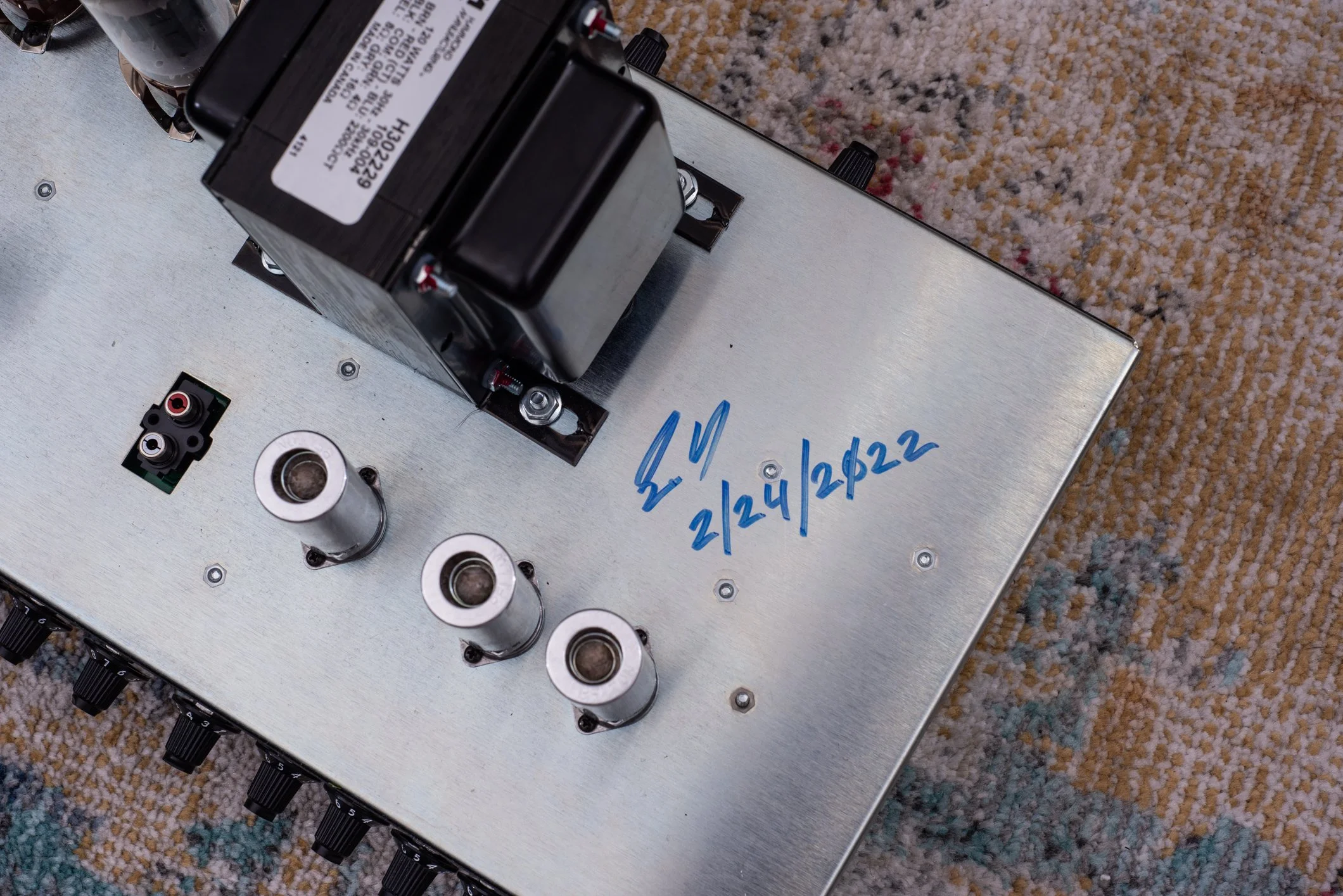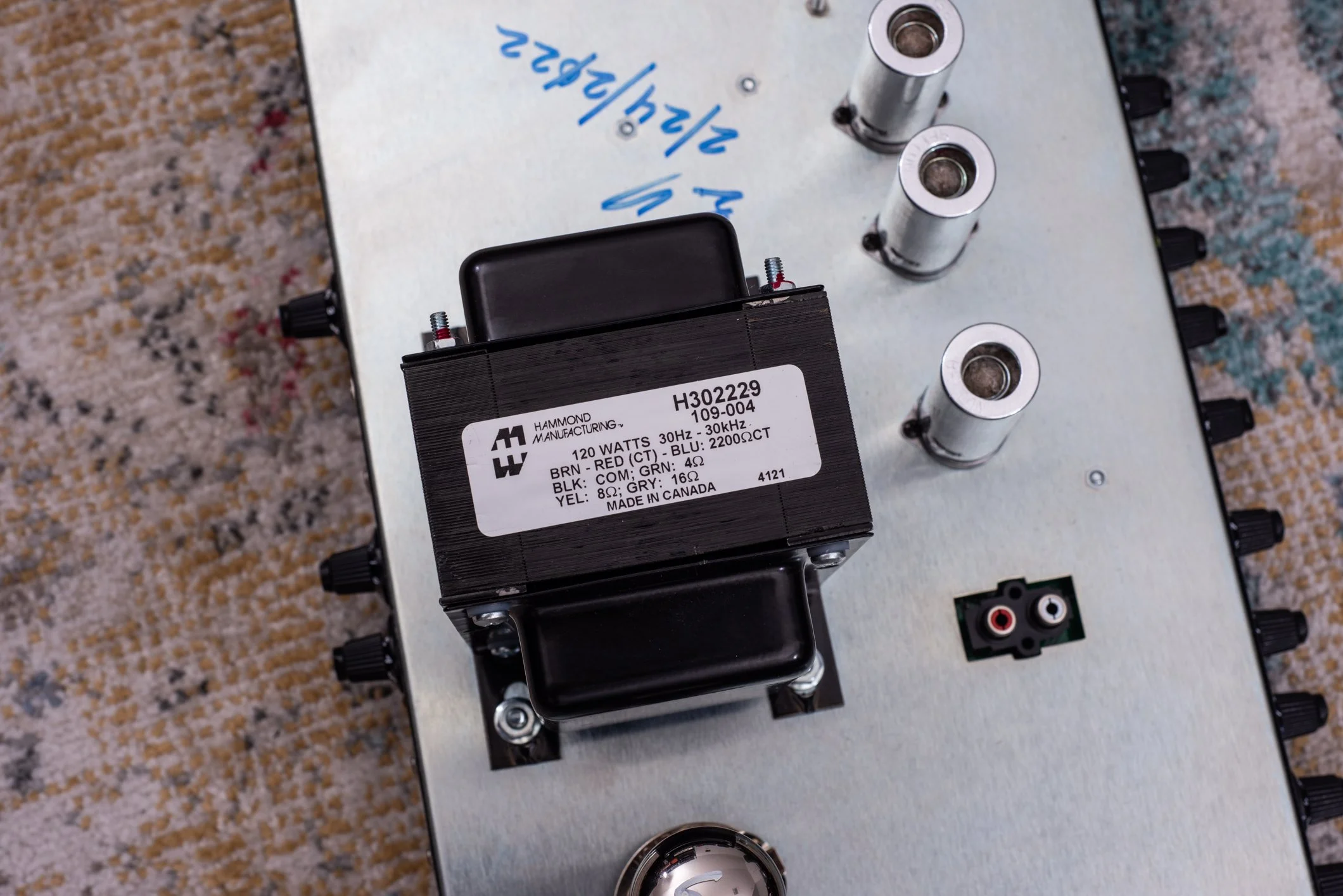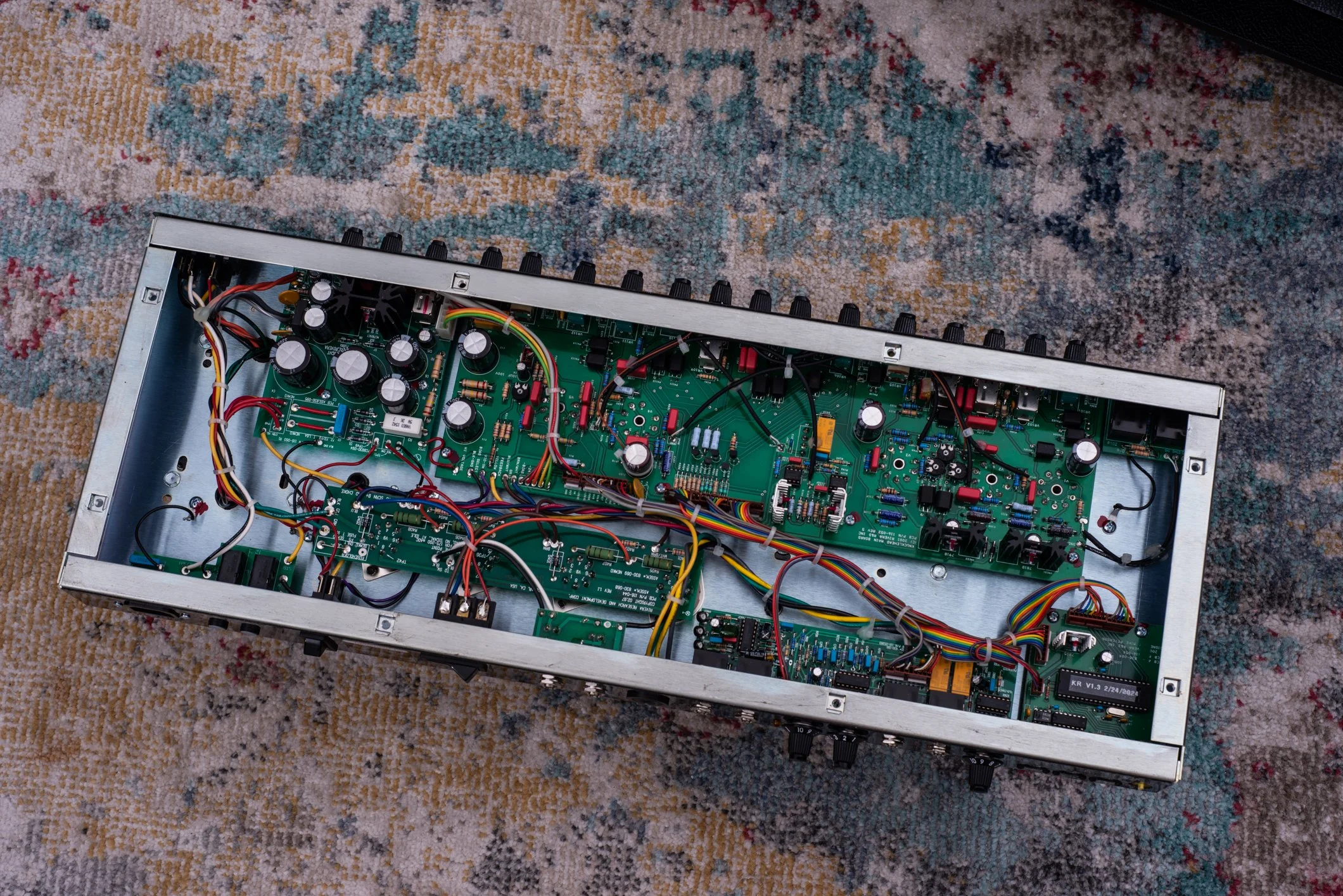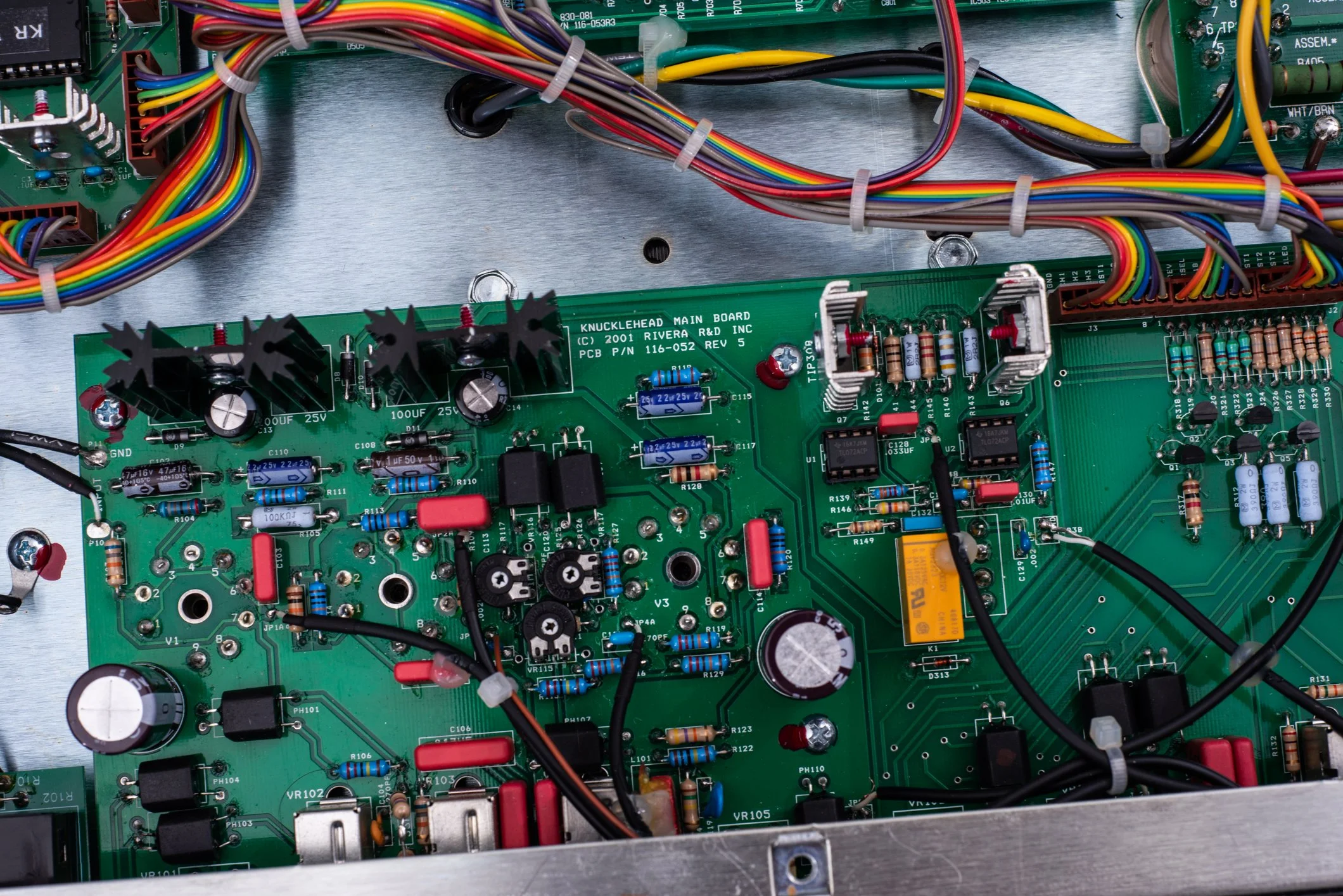2022 Rivera KR7
Specs
3 Channels
120w Output
4x EL34 Power Tubes
5x 12AX7 Preamp tubes
Accutronics spring reverb
$3499 in 2022
Overview
This amp is Mick Thomson of Slipknot fame’s signature amp. It is essentially the same as the standard Rivera KR100 head, but with the drive channels re-voiced with Mick’s input to tighten up guitars in lower tunings.
Features are the same as the standard KR100, with 3 channels each with a separate boost, shared EQ on the two drive channels, and pull switches on the EQ of the clean channel. It also has an FX loop which can be used as an overall master volume, a sub out for using specialized powered subwoofer cabs (previously called “Los Lobottom”), and the same power amp switching options (high/low and vintage/modern). It’s worth mentioning that the Subwoofer cabinets haven’t been made in years, and the matching 4x12 cab for this head is a standard cabinet arrangement loaded with 4x Celestion G12-K100’s. Although the subwoofer out idea is very cool, I doubt it has much of a usable real world application, especially on an amp like this used for tight, downtuned metal where a bunch of sub bass frequencies would be counter-intuitive.
I also have to mention my particular unit’s reverb stopped working, and the amp is less than a year old. I contacted Rivera for support and they told me the tank was probably bad, but they did not respond when I asked if I could buy the part or schedule a repair. I ended up checking the specs of the unit in the amp and ordered my own replacement, which I installed easily - but the reverb still does not work on the overdrive channels, only the clean. I reached out to Rivera again and never got a reply - not exactly confidence inspiring for an amp that was $3500 new.
The good news is that despite the reverb issues, the amp sounds spectacular otherwise. Channel 1 is a really full bodied clean sound, and just like my Bonehead, the gain and EQ pull switches (bright, notch, and contour) there is a huge array of tones here. Even better than the Bonehead, the natural tone of this channel is already very good sounding with lots of snap, so the bright switch is a nice option to use, as opposed to the Bonehead where it is required at all times. It’s clearly a concept that has been refined quite well in the 10 or 15 years in between this amp’s development and the earlier Knucklehead pull-switch clean channels.
Channel 2 is closer to a regular Knucklehead, with lots of punch and modern crunch, but can get well into high gain territory especially with the boost. This channel is my preferred one for lead sounds on this amp since Channel 3 is much, much brighter and cutting, which to me suits a better rhythm tone. Both of these channels have separate gain, volume, and boost controls, but one of the most glaring flaws of this amp is their shared EQ. They are voiced so differently that I frequently find myself frustrated that I can’t brighten up my Ch2 Lead sound without making Ch3 Rhythm too bright/thin, and on the other hand, in order to get Ch2 cutting enough for high gain metal rhythm, it makes leads with channel 3 sound way over the top in shrill. It’s a shame because when using the channels independently, they sound incredible. I think this would be fine in a cover band, as long as your songs only need to switch from clean to drive + boosted drive for solos - basically, I treat it like a two channel amp, using either Ch1+Ch2 or Ch1+Ch3. This problem isn’t as evident in the standard Knucklehead Reverb heads because the voicing difference between Ch2 and Ch3 isn’t as drastic.
Overall, it’s a great amp with very cool tones inside, hamstrung by spotty customer service and control limitations. I’ve heard these compared to Rectifiers quite a bit and I really don’t hear it - this amp at least sounds nothing like a Rectifier to me, it really has its own thing going on.

